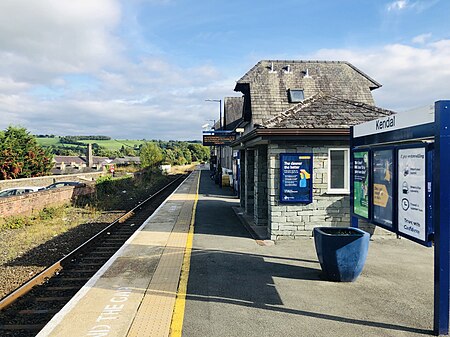Kendal railway station
1846 establishments in EnglandDfT Category F1 stationsFormer London and North Western Railway stationsKendalNorth West England railway station stubs ... and 5 more
Northern franchise railway stationsPages with no open date in Infobox stationRailway stations in CumbriaRailway stations in Great Britain opened in 1846Use British English from August 2017

Kendal railway station is a railway station serving the market town of Kendal in Cumbria, England. The station is owned by Network Rail and is operated by Northern Trains who provide all passenger train services.
Excerpt from the Wikipedia article Kendal railway station (License: CC BY-SA 3.0, Authors, Images).Kendal railway station
Longpool,
Geographical coordinates (GPS) Address Nearby Places Show on map
Geographical coordinates (GPS)
| Latitude | Longitude |
|---|---|
| N 54.332 ° | E -2.74 ° |
Address
Longpool
LA9 6FB , Mintsfeet
England, United Kingdom
Open on Google Maps










